Realplayer is required to view this video clip. If you do not have Realplayer installed, you can obtain a free version from http://www.real.com.
The dormant Zeiss Model II Projector here in Pittsburgh, sits in a dark and empty planetarium
theater. The Zeiss could easily be restored today. However, there are "experts" propagating
disinformation regarding the usefulness and the historical nature of this instrument. A number
of links are included at the bottom of this page to dispel the notion that Buhl's Zeiss Model
II Planetarium Star Projector has seen it's day, and is no longer of value. Perhaps a visit
to these links will demonstrate the value of once again operating Buhl's "old" planetarium
projector. (Not restoring or operating this equipment is to do the world an injustice.)
Realplayer is required to view this video clip. If you do not have Realplayer installed, you
can obtain a free version from http://www.real.com.
![]() - Video clip from within Zeiss Pit. The process of lowering the Zeiss and the floor covering
over and rising into place takes several minutes. This video has been time-compressed, showing the
whole process in under 2 minutes.
- Video clip from within Zeiss Pit. The process of lowering the Zeiss and the floor covering
over and rising into place takes several minutes. This video has been time-compressed, showing the
whole process in under 2 minutes.
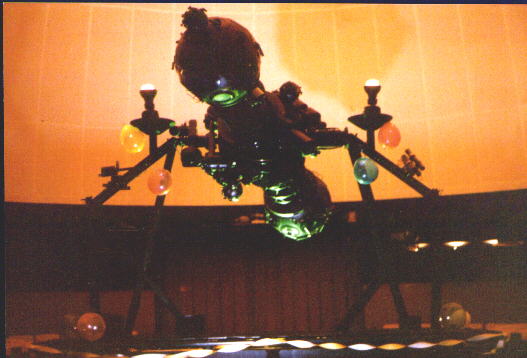
Jake's all dressed up for his 50th birthday party
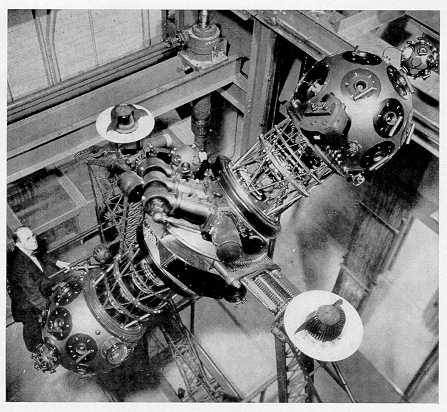
The lattice-like projector support is designed to be a lightweight as possible to minimize vibration while the instrument is in motion. The construction of the planetary projector cages is similarly constructed.
The following few diagrams and drawings are just a small sample of the more than 30 pages of detailed
electrical and mechanical schematics of the Zeiss Model II Planetarium Star Projector. These documents,
courtesy of Carl Zeiss Germany, are currently on file at Save The Buhl.org.
The Zeiss Model II Planetarium projector creates all this magic without the use of any type of computer or software. This amazing fact is one of the reasons the Zeiss has been able to seamlessly perform for over 60 years.
The two large spheres are 29 inches in diameter and are made of thin (0.078-inch) sheet brass.
Copper plates 0.0006 inches thick (a stack of approximately 1700 of these plates is equal to 1 inch.) perforated with 65 different hole sizes to represent stars of different magnitudes.
Each sphere contains a 1000-watt illumination lamp for the star images and 16 individual star projector assemblies capable of displaying 9000 stars.
The Zeiss can display the nighttime sky, as seen from virtually anywhere on earth. This can be any nighttime sky 25,800 years into the future or the past. It takes I minute and 10 seconds to travel a year in "Zeiss time."
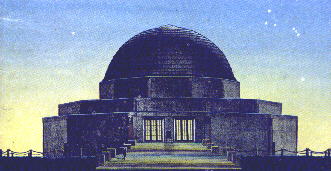
This planetarium inspired the design of The Buhl Planetarium. http://www.adlerplanetarium.org/
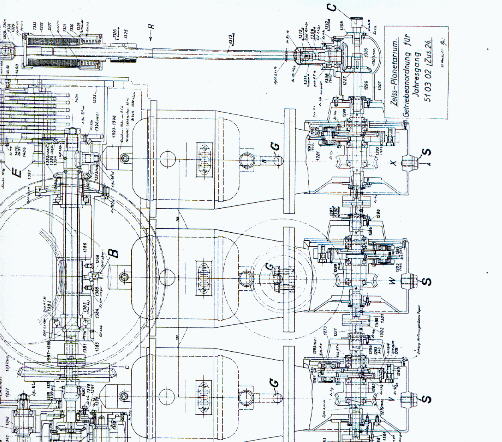
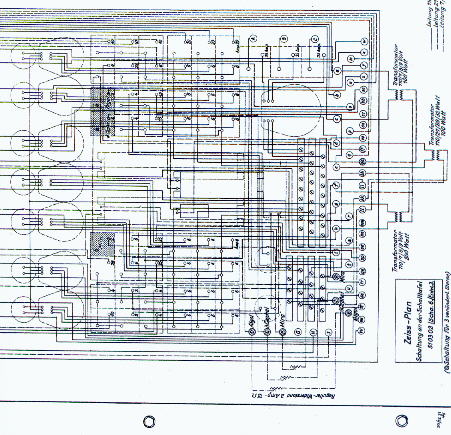
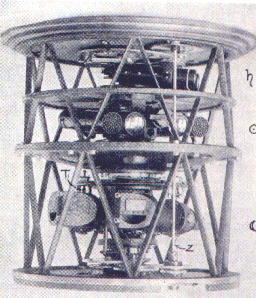
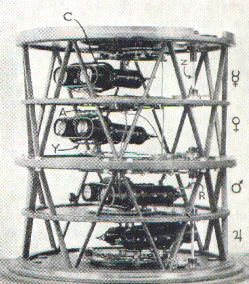
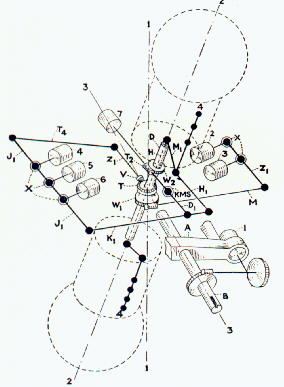
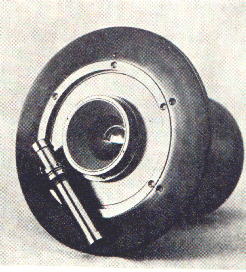
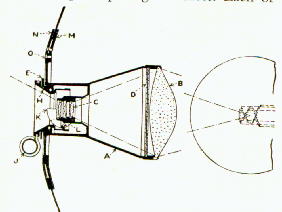
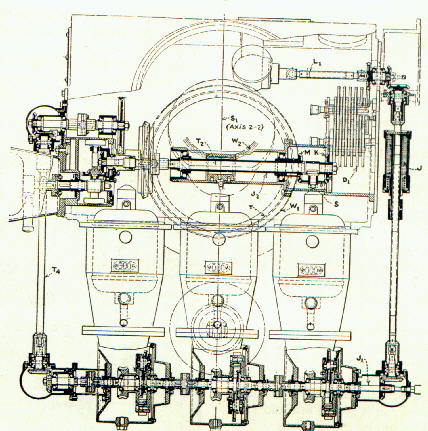
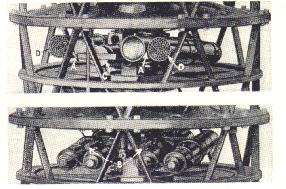
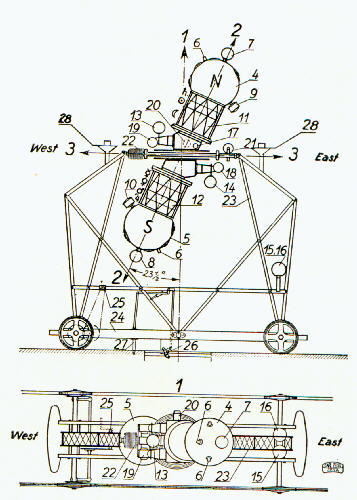
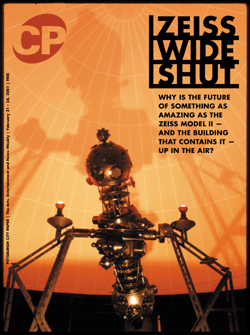
Click on photo above to read the story by Chris Potter.
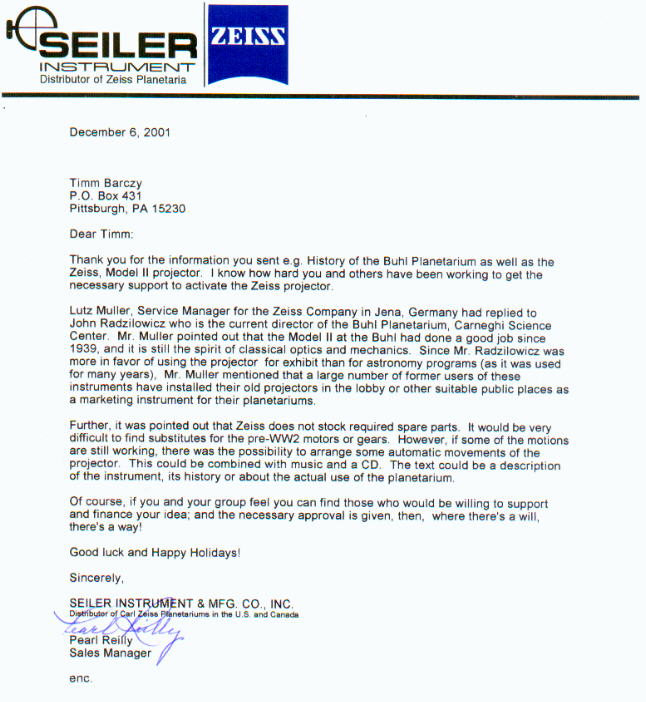
This link encapsulates planetarium development. The first planetarium opens to the public in August of 1923.
(Buhl's Zeiss Model II Projector was completed by Zeiss Optical in 1935 and installed in Pittsburgh in 1939.)
See if you can discover what makes Buhl Planetarium famous.
http://www.griffithobs.org/IPSDream.html
Here is a One-Of-A-Kind planetarium projector designed and constructed by the staff of the California Academy of Science.
This amazing projector functions today at the World Class Morrison Planetarium in San Fransisco.
This year marks it's 50th year of service. The estimated worth of the Academy Projector is $3 Million.
(Check out the entire site. It's ''Very Cool'')
http://www.calacademy.org/planetarium/about.html#unique
Be sure to stop at the Springfield Science Museum the next time you are in Massachusetts.
The Seymour Planetarium opened there on October 20th, 1937 and contains the Historic Korkosz Projector,
the oldest American built Star Projector still in operation. In 1996 the projector was completly
restored, and continues to operate on a daily basis. Springfield Science Museum has no immediate
plans to replace this amazing projector.
(We at SaveTheBuhl.org would like to thank John Radzilowicz for giving us a heads-up to the location
of this unique and historic stellarium.)
http://www.pielock.com/kork.htm
The oldest operational Planetarium Projector on the planet's surface is located in Pittsburgh, Pennsylvania
at the Buhl Planetarium and Institute of Popular Science building. It is currently not operating
or in the process of restoration. It sits dormant, and educates and inspires no one.
The preservation of this historic scientific wonder is uncertain.
Perhaps the actions taken by the Springfield Science Museum and the Morrison Planetarium could
serve as a blueprint for the City of Pittsburgh.
Buhl Planetarium
The links included in this site are supplied for reference and educational purposes only. The inclusion of those links within this site does not necessarily imply or construe an association with or an endorsement of the content material contained within this website.

 Back To Lobby
Back To Lobby
© 2001, 2002, 2003, 2004 SaveTheBuhl.org